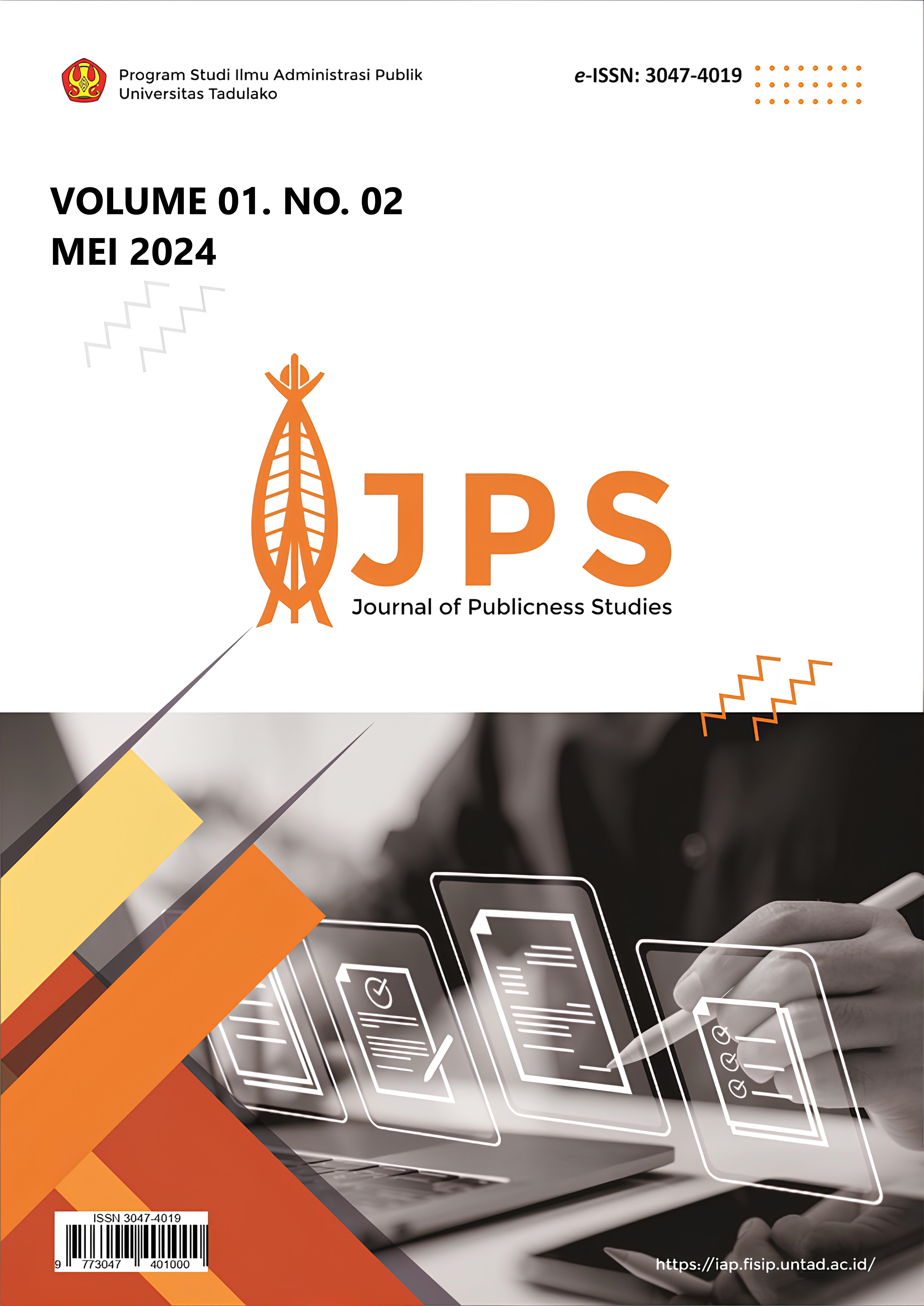Implementasi Kebijakan Pencegahan Pemberantasan Penyalahgunaan dan Peredaran Gelap Narkotika di Badan Narkotika Nasional Kota Palu
plugins.themes.academic_pro.article.main69451e3f6eb47
Abstrak
Penelitian ini bertujuan untuk mengetahui Implementasi Kebijakan Pencegahan Pemberantasan
Penyalahgunaan dan Peredaran Gelap Narkotika di Badan Narkotika Nasional Kota Palu. Metode
penelitian yang digunakan Deskriptif Kualitatif, yaitu memberikan gambaran tentang fenomena
atau fokus permasalahan yang tengah diteliti yang terjadi di lokasi penelitian sesuai fakta yang
ada. Teknik pengumpulan data yang digunakan adalah observasi, wawancara informan secara
mendalam dan dokumentasi untuk mengumpulkan data yang dibutuhkan berupa data primer dan
sekunder. Sedangkan informan dalam penelitian ini berjumlah 5 orang yaitu 4 orang dari pihak
Badan Narkotika Nasional (BNN) Kota Palu dan seorang pengguna narkoba di Kota Palu. Teori
yang digunakan dalam penelitian ini adalah teori George C. Edward III dimana ada empat aspek
yang digunakan dalam tahapan Implementasi Kebijakan Pencegahan Pemberantasan
Penyalahgunaan dan Peredaran Gelap Narkotika di Badan Narkotika Nasional Kota Palu. Keempat
aspek tersebut yaitu Komunikasi, Sumber Daya, Disposisi, dan Struktur Birokrasi. Berdasarkan
hasil penelitian, menunjukan bahwa Implementasi Kebijakan Pencegahan Pemberantasan
Penyalahgunaan dan Peredaran Gelap Narkotika di Badan Narkotika Nasional Kota Palu sudah
berjalan dengan baik pada beberapa aspek yaitu Komunikasi, Disposisi, dan Struktur Birokrasi.
Sedangkan pada aspek Sumber Daya belum berjalan baik. Hal ini dapat dilihat dari staf yang
masih kurang yang ada pada Badan Narkotika Nasional (BNN) Kota Palu, serta belum
memadainya sarana dan prasarana yang ada pada kantor Badan Narkotika Nasional (BNN) Kota
Palu. Segala bentuk masalah ini perlu adanya perbaikan dan perombakan agar kedepannya berjalan
dengan baik.

